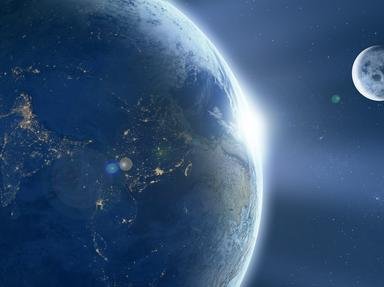Quiz Answer Key and Fun Facts
1. Since 1987, which is the most accepted theory about the origin of the Moon?
2. Without the Moon, what would happen to our tides?
3. Without the Moon, Earth's rotation on its axis would be which of these?
4. What color does the sky appear when viewed from the Moon?
5. Where does the "silvery" light of the Moon originate from?
6. In 1999, who became the first person to have his ashes deposited on the Moon?
7. What is the name given to the hypothetical rogue asteroid that struck the Earth, originating the Moon?
8. What astronaut performed an experiment on the Moon in 1971 that proved Galileo's theory of falling objects in gravity fields to be correct?
9. What is lunar regolith?
10. Which is the largest Mare on the Moon?
Source: Author
russalka
This quiz was reviewed by FunTrivia editor
rossian before going online.
Any errors found in FunTrivia content are routinely corrected through our feedback system.

